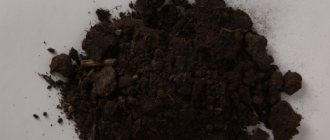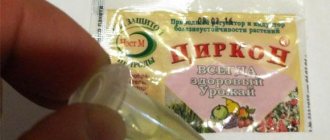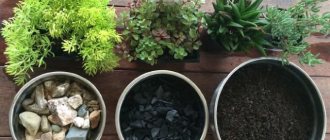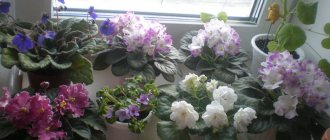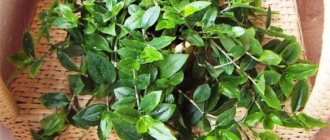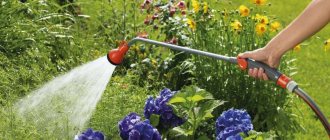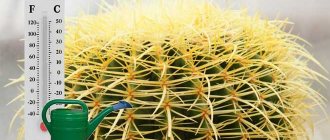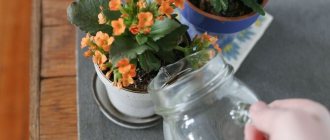Violets are very demanding when it comes to watering and do not tolerate overdrying of the soil and further heavy watering.
In order to provide the violet with comfortable conditions during the holidays and minimize the time spent caring for a large collection, you can organize the cultivation of violets on mats. In this case, watering Saintpaulia will need to be done no more than 1-2 times a week, while the plant will receive the moisture it needs around the clock.
Capillary mats for violets
To organize capillary irrigation, a capillary mat is required, which is a hygroscopic fabric capable of absorbing from 1 to 3 liters of water.
The top layer of the capillary mat is a protective porous film. The purpose of this protective layer is to protect against the ingress of soil and germination of roots, as well as against the occurrence of mold on the main layer.
The base layer is a porous material , usually synthetic felt, that absorbs moisture and holds it for plants. To water the plant, the pot is placed on a capillary mat and, due to its weight, it is pressed, releasing liquid.
Capillary mat.
When using this method, plants receive sufficient moisture without suffering from overdrying. They are convenient to use in trays, pallets and racks. You can purchase capillary mats in specialized flower shops ; the easiest way to find them is in online stores.
ADVICE! If it is not possible to purchase specialized capillary mats, there is a way to organize capillary irrigation on your own using scrap materials.
You can make capillary mats for violets with your own hands from padding polyester or any porous fabric , even an old towel will do. In this case, a piece is cut out of medium-thick padding polyester according to the size of the pallet. The first layer of padding polyester is laid out in the pallet; the top is covered with a thin film from garbage bags.
In this case, it is necessary to make a large number of small holes in the film . This film will have a protective function. After watering, Saintpaulias in pots are installed on this structure.
The advantages of a homemade design are as follows:
- cheapness;
- availability;
- the ability to install very small, lightweight pots.
There are significantly more disadvantages : they quickly become unusable, become moldy, and become dirty. Another disadvantage is that violet roots can grow into the padding polyester layer and green algae may appear.
The synthetic winterizer must be washed or replaced with a new one every 1.5 months.
Advantages and disadvantages
The advantages of capillary irrigation are obvious:
- Unlike other automatic watering systems, watering mats have a minimal cost.
- Availability. You can buy it at any flower shop.
- Continuous watering and humidification of the air around the plants.
- Through such a system, liquid fertilizers can be applied.
- Protection against many diseases, especially fungal diseases, which often arise due to overwatering of soil.
- Possibility to use for a long time.
- Save time.
- Saving water.
- Improves plant growth and development.
But such a system also has disadvantages:
- The surface must be level for laying the system.
- Uneven absorption of moisture by pots of different sizes.
- Minimum absorbed moisture in containers with a large drainage system or large drainage size.
- Requires periodic washing of the material and replacement of polyethylene.
Application technology
To use special capillary mats, it is necessary to install pallets or trays on a flat surface . If you do not adhere to this requirement, then the moisture will be distributed unevenly across the surface , flowing into the slope area. In this case, some of the plants will receive excess moisture.
Another option is to stretch and secure plastic film to a shelf or window sill. This must be done in such a way that a kind of edge is formed around the perimeter of the area. The purpose of the side is to prevent water from draining.
Next, you need to lay the porous material with a fluffy or rough layer down, and lay a porous film on top and pour water on it.
Pots with violets are placed on this structure; for uniform moistening, it is desirable that they be of the same weight . After a month, you can start watering with the addition of fertilizers.
Where can I buy
The table shows several online stores where you can buy capillary mats.
| Shop | Dimensions | Price |
| compasltd | All rolls are 50 m, but they can be purchased in width: 1; 1.25; 1.5; 1.8; 2; 2.2 | Minimum 6600 rub. |
| 7mark | Roll length 1 m | 265 rub. |
| dacha66 | Roll length from 1 m | Price from 240 rub. for 1m. |
| flagma | 1m length | From 220 rub. |
Irrigation principles
To determine the required amount of water for irrigation, you need to consider the capillary mat. There should be no liquid on its surface, but moisture should come out when pressed. Watering must be done when no water is released when pressing on the surface.
Watering capillary mats.
Due to the constant presence of a capillary mat in the room, air humidity increases, which also has a beneficial effect on the condition of violets.
Mature plants can be left without watering for a long time , since they are able to draw water even from a slightly damp mat that does not release water.
At first, you need to focus on the indicated density of the material, which indicates how many liters of water the surface per square meter absorbs and the total area of the cut piece. As a rule, the moisture capacity of capillary mats is from 1 to 3 liters of liquid per square meter .
Depending on the air temperature and humidity of the room, you need to reduce or increase the amount of liquid for irrigation.
Do-it-yourself capillary irrigation, watering on fabric
- An automatic watering system can be organized using a glass jar and terry cloth. Place a damp, wrung-out towel at the bottom of the tray. Place pots of flowers on it.
- Pour water into a glass jar, close it with a lid with a small hole made (10 - 15 mm). A 3-liter bottle with a nylon sealed lid is suitable. In my photo - a half-liter with a regular screw cap. Cover the hole with your finger, turn the jar over and place it upside down there, on this terry towel. You will see air bubbles rushing upward. Water will seep out little by little from the hole in the lid.
- Turn the jar of water over and place it on a towel next to the flowers.
- Once the towel is sufficiently damp, air will stop flowing into the jar and water will stop flowing out.
- Check: Wring out the towel and place the jar of water back on it. Air bubbles will appear and the process will repeat - this means the automatic watering system is working. (Without a towel, water will not flow out of the jar.)
- How much water will flow to the plants depends on the type of pots and drainage (see above - watering with a bottle), as well as the thickness of the towel. It’s worth checking 10 days before your vacation to see how this automatic watering system will work.
Reviews
Forums dedicated to caring for violets provide reviews on the use of capillary mats. Reviews are mostly positive, the plants feel good and bloom profusely.
A common problem is uneven shelf surfaces , since the liquid is distributed unevenly.
In this case, it is necessary, using a simple trial and error method, to select varieties that love moisture more and install them in areas that accumulate liquid.
In order to properly organize watering of violets using capillary mats, it is necessary to monitor the condition of the plants during the first months and regulate the volume of water when watering.
Sergey. “When using capillary mats, the violets began to lift their leaves, the black protective film was removed to solve the problem, but now salts and debris accumulate on the mats.”
Ilya. “It’s quite difficult to establish watering, but after success, caring for violets began to take much less time.”
Natalia. “I tried it, but returned to overhead watering, the plants stand on damp mats and this makes them dry out longer, but they are not used for watering.”
How to water flowers during vacation or business trip
In this case, a micro-drip automatic watering system, a flowerpot or a ceramic cone will be suitable. It is necessary to prepare for their arrangement in advance and check the system for correct operation. It is important that moisture is supplied as needed to prevent overdrying or waterlogging, which is detrimental to plants.
Top 5 ready-made systems (manufacturers)
Among the most well-known systems for automatic watering of plants are:
- Bug – .
- Water strider - from .
- A drop – .
- The harvest is from Tuboflex.
- The source is production.
Each of the systems operates on the basis of a drip tape (Bug, Drop, Harvest and Source) or a tube (Water Strider). For irrigation, a container of water or a pipeline (well) is used.
Features of keeping on mats
When using capillary irrigation, the soil should consist of peat and raising agents ; fertile soil is not added; therefore, it is necessary to add fertilizer with each watering. Phytosporin should be added once every three months to avoid the unpleasant smell of dampness.
If the mat becomes dirty, you can simply wash the top film and wash the porous fabric in the washing machine on a delicate cycle or rinse it well to remove the dirt.
Capillary mats require regular cleaning.
ATTENTION! Violet babies are not suitable for capillary irrigation, since their weight is not enough to push the mat and squeeze out the water. The consequence is overdrying of the plants. An exception is the use of homemade mats made of padding polyester or other fabric, on which children intensively grow and become stronger.
There should be no expanded clay or polystyrene drainage in the pots ; only sphagnum moss is allowed. If improper drainage is used, violets will not be able to access moisture.
For watering with mats, it is recommended to use plastic pots with a multi-level bottom and large holes for water and air.
Ceramic pots , as well as pots with small holes and legs on the bottom, strictly
- Ceramic pots do not have enough holes and will quickly deteriorate due to humidity. In addition, there is a possibility of mold;
- choosing pots with small holes and legs at the bottom will result in overdrying of the soil.
It is recommended to use pots with a diameter of no more than 9 cm, since larger sizes will lead to the growth of the rosette.
You should pay attention to the total weight of the pot with the plant. It is advisable that all pots with plants be of the same weight , otherwise they will press on the capillary mat with different intensity and the plants will receive different volumes of liquid.
Plants of the same size should be selected for keeping on mats.
Thus, it is recommended to transfer mature, healthy plants with a developed root system to capillary irrigation on special mats . When purchasing a new plant, be sure to quarantine for several weeks, since the likelihood of transmitting diseases and pests through a common tray is very high.
ADVICE! Capillary irrigation must be adjusted to your conditions, so at first you need to carefully monitor the condition of the plants and soil moisture. If necessary, you need to reduce or increase the frequency of watering and the amount of liquid.
If an individual plant constantly gets wet, it makes sense to grow it again, accustoming it to capillary watering from the very beginning. It is necessary to regulate the volume of liquid for one-time watering depending on the time of year and the air temperature in the room.
Types of automatic watering
Creating automated irrigation does not require expensive equipment. Let's consider the main ways of organizing such systems.
Here we consider systems designed exclusively for watering indoor plants; also on our website you can study the issue of organizing automatic watering systems for your dacha.
Drip
This is the simplest “automatic waterer” that can be made from an ordinary plastic bottle. The algorithm is as follows:
- you need to take a two-liter PET bottle with a stopper, cleanly washed from the inside;
- cut the bottom with a knife to make a funnel. It will be needed for the convenience of pouring water;
- Make a small hole in the removed plug. It can be made with an awl or drill of the appropriate size (3–4 mm);
- A single layer of mesh or gauze should be placed over the neck to prevent clogging. The fabric itself is also wrapped around the thread;
- Next, the plug needs to be screwed onto the thread of the neck so that the fabric/gauze is fixed.
Automatic drip watering for indoor plants, prepared for use, is turned upside down with the plug. Then you can go in two ways:
- dig the bottle into the ground;
- hang it so that it barely touches the surface;
- All that remains is to fill the system with water, and the simplest automatic watering is ready.
Important: it is advisable to choose a bottle of such a capacity that it matches that of the flower tub or pot.
Method using a wick
A rope woven from fibers is capable of carrying water along its length. This curious physical property is also useful in irrigation.
How to make automatic watering for indoor plants using a wick:
- take a piece of rope that will become a wick;
- one end is lowered into the filled container;
- the second is brought to the plant;
- the wick will absorb water and transport it to the flower.
The wick rope can be fixed directly to the ground or inserted into the drainage of the tub. The first option is well suited for plants living on a light nutrient substrate, like violets.
It is advisable to select laces made of synthetic materials - they absorb and conduct water well. It is not recommended to use ropes made from natural fabrics: in the ground they quickly begin to rot, tear and cease to perform their function.
An important advantage of the wick system is ease of adjustment. If you raise the water container higher, the watering speed will also increase; if you lower it, it will decrease. Through experimentation, you can choose the optimal speed for an individual flower.
Important: if you transfer indoor vegetation to constant wick watering with a cord inserted into the drainage of the pot, you can do without laying a drainage layer.
Hydrogel or clay granules
This can be attributed to modern and high-tech methods. Containers or protruding bottles placed around flowers look ugly and unaesthetic, but hydrogel allows you to do without them. It consists of balls of a special material or granulated clay - they can be purchased at home and garden stores.
These substances quickly absorb water and gradually release it to the soil as it dries.
When laying hydrogel/clay for automatic watering, it is important to consider that after absorbing water they greatly increase their volume.
You need to choose a spacious and wide flower pot. A layer of the selected material is poured onto its bottom, and a plant with a lump of earth is placed on top. The free spaces between the walls of the tub and the lump are also filled with an absorbent substance. After watering, it will be enough to periodically add water, the hydrogel or granules will do the rest.
Important: after watering, the pot should be covered with film. This is done to avoid rapid evaporation of moisture.
The materials in question are reusable: they can withstand many watering-drying cycles, and such automatic watering of flowers can last for many years.
Automatic watering system from a medical dropper
Gardeners often use drippers to create “automatic waterers” in greenhouse beds. With the same success, these medical products can be used for indoor flowers.
This homemade automatic watering for indoor plants is somewhat similar to wick watering:
- the system tube is taken. A weight is attached to one end of it - it is needed to prevent floating;
- the second is fixed at the roots of the flower above the ground;
- a vessel filled with water is placed above the pot;
- then the end of the dropper tube with a fixed weight is lowered into it;
- the system opens, and the rate of water flow is adjusted by the regulator.
Watering with flasks
In stores you can buy colored plastic cones of various shapes with a long spout. They can not only become an effective DIY flower watering system, but also an original decoration.
The principle of use is simple: you need to take such a flask, fill it with water and insert the spout into the soil of the pot.
If the soil is damp, water will not flow out of the vessel. But when the soil dries out, it will allow oxygen to pass through, which will enter the flask and displace water. This is a very simple method of supplying liquid to plants using the laws of physics.
Capillary mats
This is a popular solution among gardeners. The capillary mat is a product of modern technologies for watering home gardens - a mat made of highly hygroscopic material. They absorb water well and effectively release it to the soil with planted vegetation.
To install automatic watering on mats, you need a couple of pallets of different sizes. Water is poured into the larger one. After this, a small tray is immersed in it, the bottom of which should contain perforations. A capillary mat is placed on the perforated bottom, and vegetation in need of watering is placed on it.
Another installation option, also somewhat similar to the wick one:
- the mat is laid on a flat surface (for example, a table);
- flower pots with drainage at the bottom are placed on it;
- the edge of the mat is lowered into a vessel filled with water;
- the material will absorb liquid and transport it to the greenery.
Pots with automatic watering
Enthusiasts often use automatic watering for indoor flowers based on advanced flower pots that provide the vegetation with water for about a month. Structurally, this is a container with a double bottom; You can simply use two pots of different capacities inserted into each other. Whatever the design, the principle is the same - double bottom.
Water is poured into the outer vessel. The inner one contains a drainage hole through which liquid enters the substrate. And from there the water is absorbed by the roots of the flowers.
Important: such a pot is not suitable for young house plants. Their developing root system is too short and is not able to “extend” to a depth sufficient to feed from the drainage layer.
How to use this device correctly:
- the bottom of the internal vessel is lined with a draining substrate;
- a young flower or other plant is planted on it in the prepared soil;
- The outer vessel is not filled with water at the first stage. The planted flower should be watered in the usual way, from above, until the root system gets stronger and reaches the drainage. As a rule, this process takes about two to three months - depending on the type of plant;
- After this, you can begin organizing automatic watering. The lower vessel of the flowerpot is filled with water: for this purpose, the product is usually equipped with a special tube and an indicator float. Water is poured until the MAX mark is reached;
- In addition to the last mark, there is also a MIN mark. When the float reaches it, it is necessary to repeat adding water. But you can postpone the procedure for another three to four days; the soil will still remain quite moist.
There are other ways to determine the dryness of the soil in a pot:
- on the float. It must be removed from the float chamber and wiped by hand. If drops of moisture are felt, add too early. If it’s dry, then most likely it’s time;
- using a wooden stick. Being stuck into the ground, it can either remain dry and clean, or stick to wet soil. In the first case, the plant needs watering.
Why I like capmat
1. Watering plants is significantly faster - there is no need to pour water into each glass, which often overflows from the top, seeps along the walls and simply pours out from below, without wetting the earthen lump.
2. There is no water being poured out from the box itself, the excess is absorbed by the mat, then gradually consumed.
The capillary mat is easily washed at the end of the season, dried and waiting in the wings for next year.
Eggplant before planting in the ground also grows on a capillary mat
From personal experience I can say that it saved quite a few of my plants from drying out on purchased peat soil. Unfortunately, I did not photograph those who grow up on the mat and those without. I can only say that the eustoma without a mat was very sad, it constantly dried out, and it was very difficult for me to keep track of so many plants.

